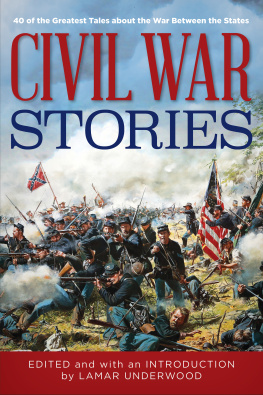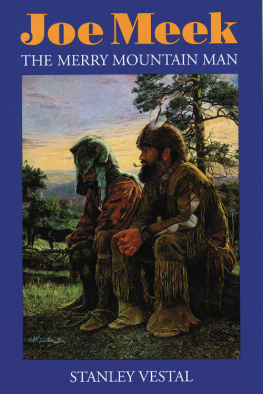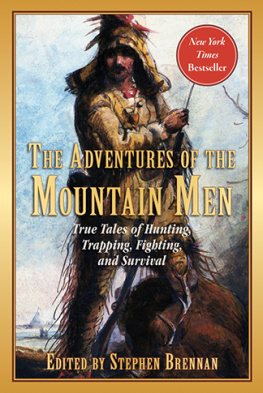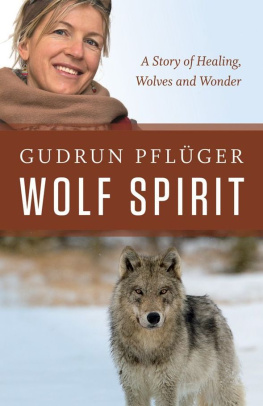Contents
The Greatest Mountain Men
Stories Ever Told
Also edited by Lamar Underwood
Into the Backing: Tales of Fly-fishing Action
Bowhunting Tactics of the Pros: Strategies for Deer and Big Game
Whitetail Hunting Tactics of the Pros: Expert Advice to Help You be a Successful Hunter
Greatest Fishing Stories Ever Told: Twenty-Eight Unforgettable Fishing Tales
Tales of the Mountain Men: Seventeen Stories of Survival, Exploration, and Outdoor Craft
Greatest Hunting Stories Ever Told: Twenty-Nine Unforgettable Tales
Greatest Flying Stories Ever Told: Nineteen Amazing Tales from the Sky
Greatest Adventure Stories Ever Told: Gripping Tales of Wild Places
Greatest Survival Stories Ever Told: When Things Go Wrong Outdoors
Maneaters: True Tales of Humans as Prey
Theodore Roosevelt on Hunting
Survive: Tales of Man versus Weather, Wilderness, and Wild Animals
Great American Survival Stories: Lyons Press Classics
War Stories: 37 Epic Tales of Courage, Duty, and Valor
Also authored by Lamar Underwood
The Quotable Soldier
The Quotable Warrior
The Quotable Writer
On Dangerous Ground: A Novel
The Greatest Mountain Men
Stories Ever Told
Edited by Lamar Underwood


An imprint of The Rowman & Littlefield Publishing Group, Inc.,
4501 Forbes Blvd., Lanham MD 20706
Distributed by NATIONAL BOOK NETWORK
Copyright 2018 Lyons Press
All rights reserved. No part of this book may be reproduced in any form or by any electronic or mechanical means, including information storage and retrieval systems, without written permission from the publisher, except by a reviewer who may quote passages in a review.
British Library Cataloguing in Publication Information Available
Library of Congress Cataloging-in-Publication Data
ISBN 978-1-4930-3287-7 (paperback)
ISBN 978-1-4930-3288-4 (e-book)
 The paper used in this publication meets the minimum requirements of American National Standard for Information SciencesPermanence of Paper for Printed Library Materials, ANSI/NISO Z39.48-1992.
The paper used in this publication meets the minimum requirements of American National Standard for Information SciencesPermanence of Paper for Printed Library Materials, ANSI/NISO Z39.48-1992.
Contents
Introduction
Behind the Ranges
By Lamar Underwood
Lets say its an early-fall day with the sun warm on your shoulders and the light breeze tangy with autumn scents coming on strong. Youre standing on the crest of a rocky ridge dotted with stunted jack-pines and overlooking a valley where creek courses are marked by lines of timber curving into view. They disappear into a vastness splashed with the deep yellows of aspen groves. The horizon is a jagged line of soaring peaks, snow-capped summits bright in the sun, with deeply-shadowed valleys between the ridges. The sight holds you hard, and you linger for a while, clutching the reins of your horse, soaking in the vision that has been like a dream during weeks of overland travel.
The sound of packs scraping brush interrupts your reverie, and you turn to see your pack mule rooting for grass among the jack pines and rocks on the scrubby hillside. Down the long hill you have just climbed, you see the open prairie stretching toward humped blue ridges of lesser mountains. You think of the countless campfires you have sat beside down there, of the vastness of buffalo herds, and the easy way elk, deer, antelope, turkey and waterfowl have fallen to your Hawken. You have eaten well during your journey, for this is country unspoiled by other hunters and travelers.
You turn back to gaze once again on the valley and mountain country before you. Now you have arrived. The best country on earth lies before you. Your footprints here may be the first a white man has ever made. Among those tiny creeks and water courses you will find beaver, filling your traps with pelts that come Spring you can sell at Rendezvous and resupply your whole outfit for another year in the wildanother year of freedom to live the outdoor life a man treasures and lives to the hilt.
Suddenly a voice stirs your imagination like a clap of thunder. Wagh, pilgrim! Youre looking to go under. Get rubbed out. Thats Blackfeet country down there.
Plenty of plews, though, your voice answers.
Furs wont do a dead man any good, the voice replies.
This little scenario played out in the Rocky Mountain is one that you actually could have livedhad you been born 250 years ago, coming into manhood in the early 1800s. Your dreams of roaming unspoiled wilderness, trapping beaver and other valuable pelts, shooting and eating the game you needed, wandering free as a bird, taking orders from no man, would have been a siren call leading to an early end to your ventures. Going it alone would almost certainly lead to going under.
All right, Ill take a companion then.
Wagh, the voice answers back. Youd better take 30 or 40, like we did back in the day.
The vision of a strong and independent mountain man like Jerimiah Johnsona free trapper as they were calledis hard to forget. We envy that life: lifting beaver traps in quiet waters below peaks of staggering beauty; feeling the warmth of a campfire, the aroma of meat roasting, the night sounds of coyotes and owls beginning to stir. No alarm clocks, no commitments except our self-chosen chores, no orders from bosses looking over our shoulders.
Its a pity, really, that such romantic visions do not match the reality most mountain men experienced. Instead of the solitary life in the wilderness as depicted in the movie Jerimiah Johnson , and the book Mountain Man by Vardis Fisher, the mountain man working alone faced dangers in every moment that would leave him facing deathalone, his skeleton to become lost and unseen in the vastness. Like it or not (its hard to put aside our romantic notions) most mountain men who valued their hair were forced to travel, camp and trap in large groups, called brigades like military units. For quick and correct images of these groups, to stir your imagination, see the movie Across the Wide Missouri , a superb MGM film starring Clark Gable and adapted from Bernard De Votos non-fiction masterpiece of the same title.
One of our major contributors in this collection, A. C. Laut, in his book The Story of the Trapper , first published in 1902, paints a vivid picture of the real world of the mountain men in an excerpt I have chosen here to complete the readers introduction to this book. The trappers world and situations described here by Mr. Laut are like a movie-trailer, previews of what you can expect in the pages ahead.
It was two thousand miles by trappers trail from the reach of law. It
was too remote from the fur posts for trappers to go down annually for
supplies. Supplies were sent up by the fur companies to a mountain
rendezvous, to Pierres Hole under the Tetons, or Jacksons Hole
farther east, or Ogdens Hole at Salt Lake, sheltered valleys with
plenty of water for men and horses when hunters and traders and Indians
met at the annual camp.
Elsewhere the hunter had only to follow the windings of a river to be
carried to his hunting-ground. Here, streams were too turbulent for
canoes; and boats were abandoned for horses; and mountain caons with
sides sheer as a wall drove the trapper back from the river-bed to
interminable forests, where windfall and underbrush and rockslide


















 The paper used in this publication meets the minimum requirements of American National Standard for Information SciencesPermanence of Paper for Printed Library Materials, ANSI/NISO Z39.48-1992.
The paper used in this publication meets the minimum requirements of American National Standard for Information SciencesPermanence of Paper for Printed Library Materials, ANSI/NISO Z39.48-1992.